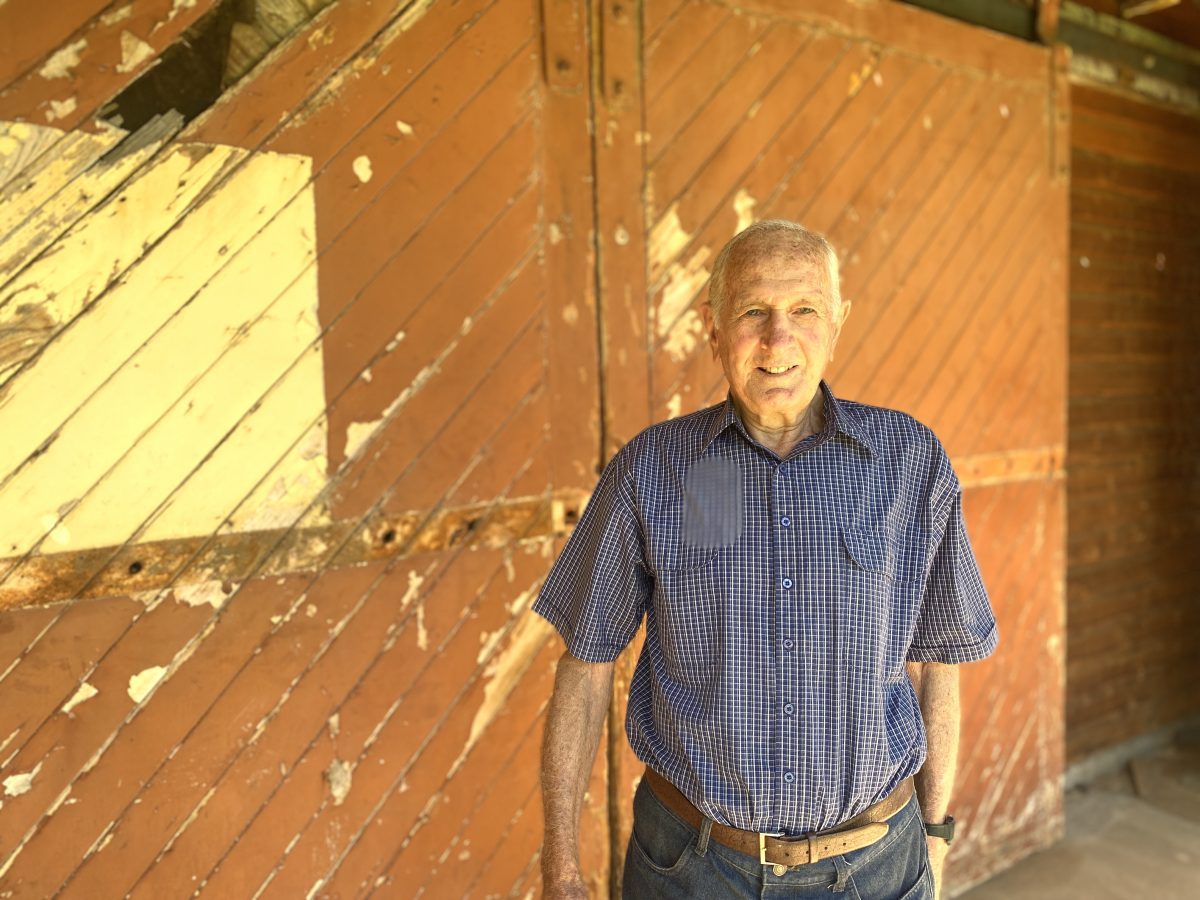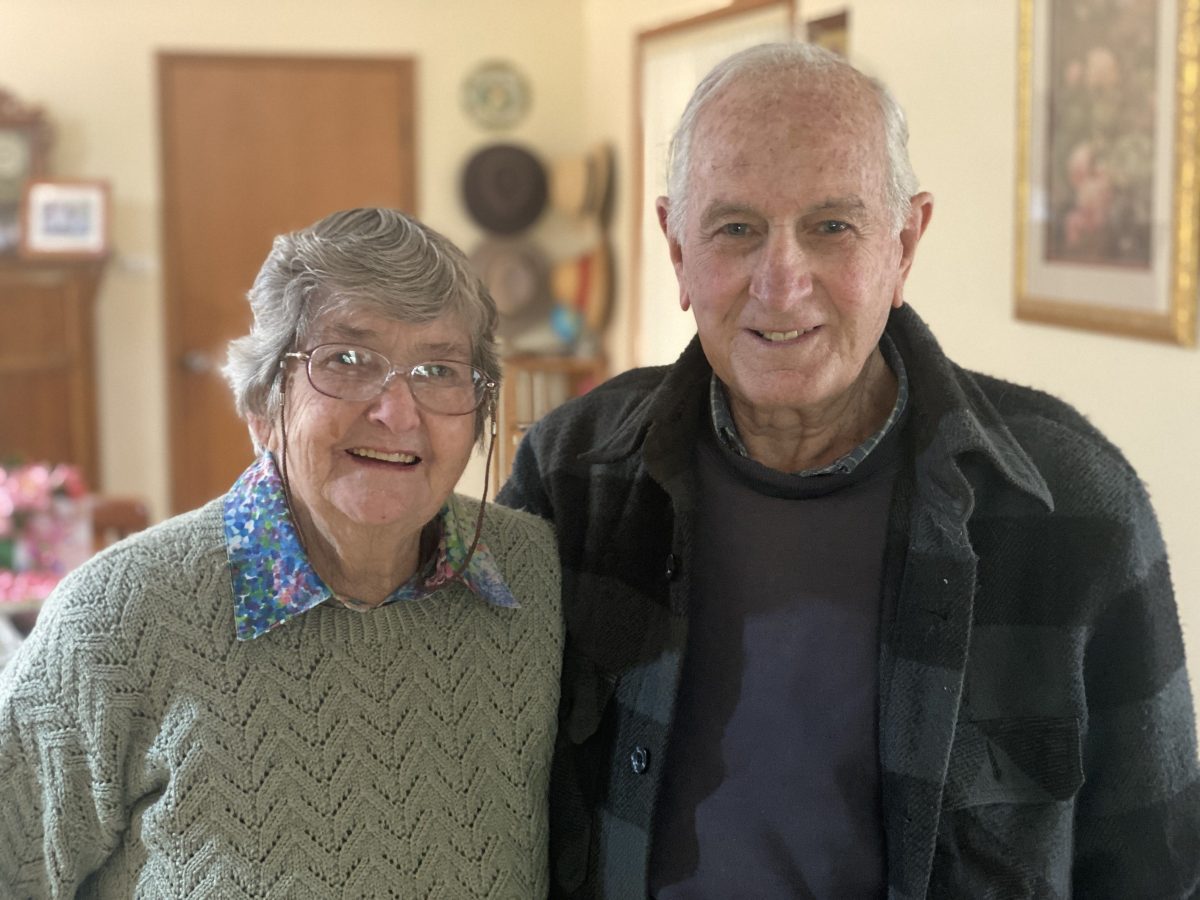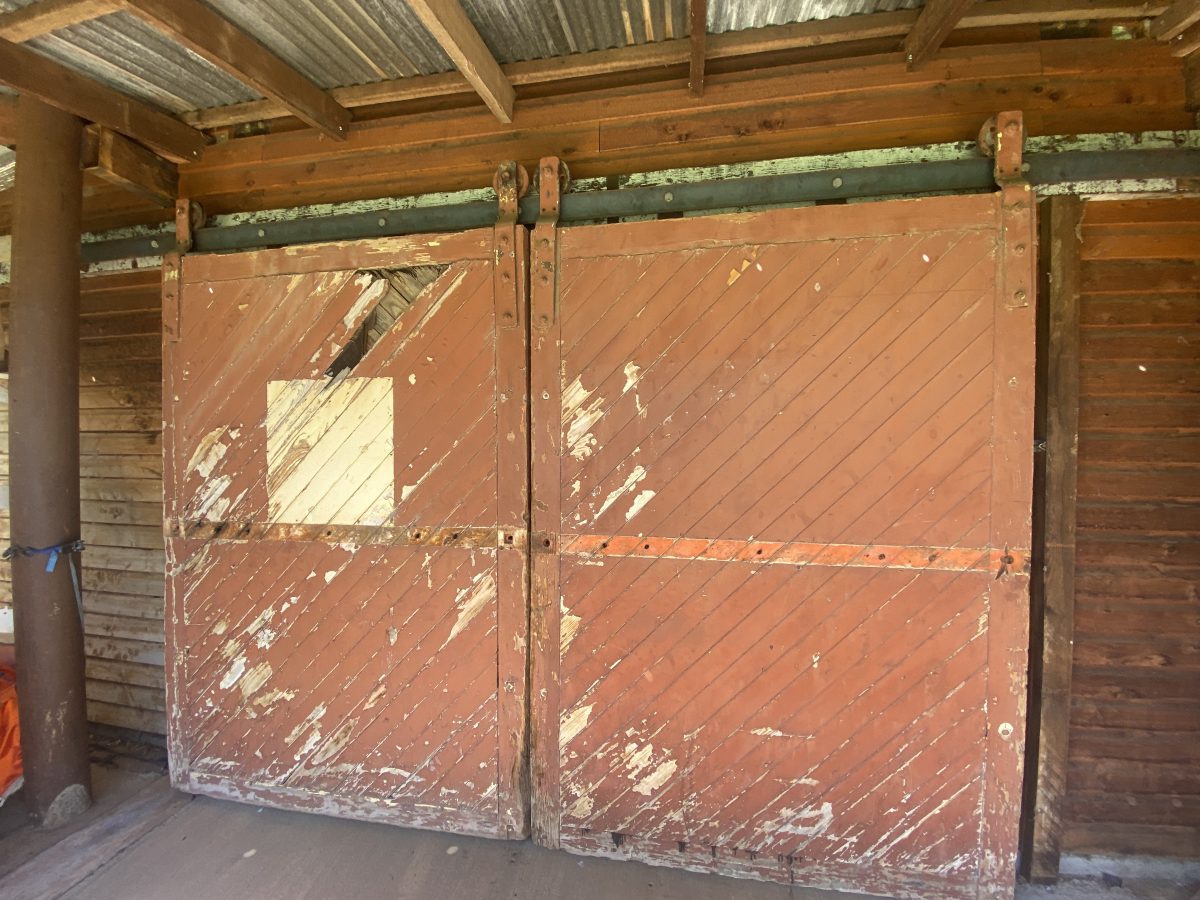
Denis Lorenzi outside the 107-year-old doors to the Griffith Producers’ cool room, now located at the Piccolo Family Farm. Photo: Oliver Jacques.
Most of us who complain about the hot Riverina summer can be grateful that we weren’t alive in January 1939, when temperatures exceeded 49 degrees during a heatwave claiming the lives of 113 people across south-east Australia.
In an era before home air-conditioning, farming families surrounding Griffith were particularly vulnerable, as many properties didn’t even have fans, fridges or electricity.
Some quick thinking by local GP Dr Burrell prevented even more casualties during the heatwave – he suggested placing patients at Griffith hospital and at-risk babies in a cool room operated by Griffith Producers, a co-operative that stored and sold fruit and vegetables.
Denis Lorenzi, now aged 84, was just nine months old in 1939, when his parents placed him in the storage space.
“All the oldies and the babies were put in the cool room,” he said. “It kept all the fruit and vegetables for days before they were sold.”
A newspaper called the Grenfell Record and Lachlan District Advertiser reported on how the drama unfolded in its 19 January 1939 edition:
“Five babies who collapsed from the recent heat wave were, on medical advice, placed in the Griffith Producers’ Cool Stores, and appear to be recovering satisfactorily. A moderate temperature was specially maintained at the cool stores, and the parents sat beside their babies throughout the weekend.”

Denis and Hazel Lorenzi have been married 64 years. Photo: Oliver Jacques.
Mr Lorenzi was adamant that he wasn’t one of the infants who fainted.
“I was pretty tough. I’ve always been able to take the heat. I’m not one of those people who complain once the temperature hits 35.”
The Griffith Producers co-operative operated between 1916 and 1963. It was located on Banna Avenue, where a Red Rooster eatery stands now. The 107-year-old doors of the cool room were purchased by Mr Lorenzi’s brother-in-law, restaurateur Peter Piccolo, who recycled them for use on the Piccolo Family Farm.
“I bought them twenty years ago, just before the building was about to be demolished,” Mr Piccolo said. “But I never knew the story of the cool room saving lives until my brother-in-law Denis came over to my place one day, noticed them and told me.
“It’s in my blood to collect old building material and give them new life. Our restaurant Limone is made from recycled material – from four iconic buildings that made up the foundation of agriculture. Older people see certain material and they get emotional as it brings back memories … we have a mental health crisis, we have to save things that remind us of the past.”
The engine that ran the cool room is now at Griffith Pioneer Park Museum.
“It was so hot [that summer of 1939] birds were falling out of the sky,” museum acting manager Jenny O’Donnell-Priest said.
Mr Lorenzi explained how his family coped with the heat on his family farm without electricity.
“We lived on farm 600 in Beelbangera. The summers were hot. We didn’t have a fan or a fridge. We just swam in the channel to escape the heat.
“My dad built a big ice chest – a big box. It was insulated with sawdust. It wasn’t as cold as a fridge, but we could put meat and vegetables there. We would buy two blocks of solid ice that would last us one week.”

Full shot of the cool room doors. Photo: Oliver Jacques.
After moving away from home, he became a sheet metal worker and started his own business – Griffith Tank Works, which made water tanks. He has been married to much-loved Griffith pianist and history buff Hazel Lorenzi for 64 years, with whom he quickly worked out the secret to a successful partnership.
“I just do what I’m told,” he said.
“She keeps me in line. We’ve always been happy with what we have.”
Mrs Lorenzi recently celebrated 40 years of playing the piano in Griffith aged care facilities. She also keeps records of all the historically significant events in town, including that famous summer.
The 1939 heatwave saw eleven consecutive days of 40-plus degree Celsius temperatures between 6 January and 17 January. A lowlight of that period was a series of fatal bushfires across north-east Victoria on 13 January, which became known as Black Friday and sparked a royal commission. More information can be found on the Australian Disaster Resilience knowledge hub.
Original Article published by Oliver Jacques on Region Riverina.







